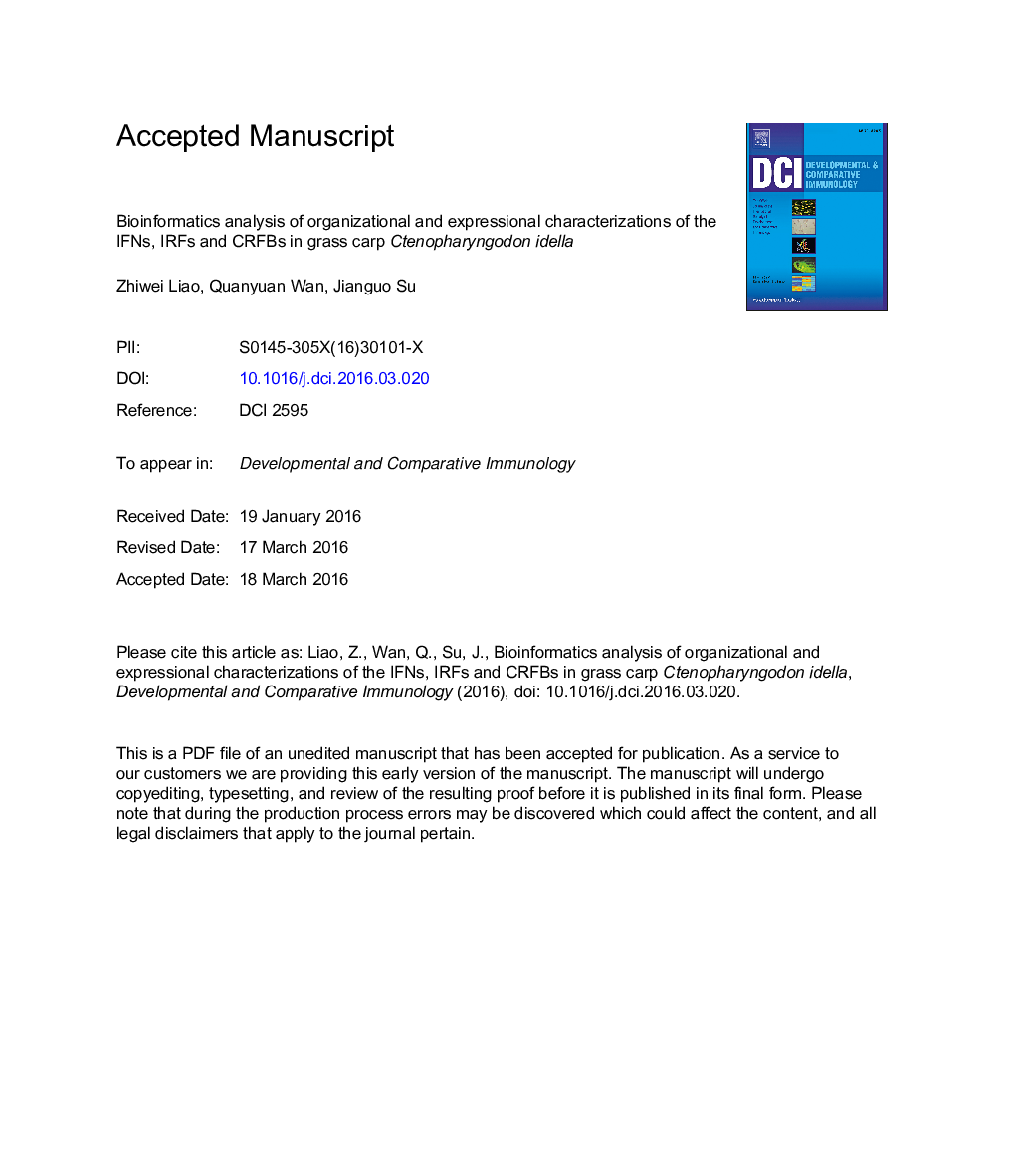| Article ID | Journal | Published Year | Pages | File Type |
|---|---|---|---|---|
| 8497979 | Developmental & Comparative Immunology | 2016 | 39 Pages |
Abstract
Interferons (IFNs) play crucial roles in the immune response of defense against viral infection and bacteria invasion. In the present study, we systematically identified and characterized the IFNs, their regulatory factors (Interferon Regulatory Factors, IRFs) and receptors (Cytokine Receptor Family B, CRFBs) in grass carp (Ctenopharyngodon idella). Grass carp IFNs can be classified into type I IFN (IFN-I) and type II IFN (IFN-II) like other teleosts. IFN-I consist of two groups with two (group I) or four (group II) cysteines in the mature peptide and can be further divided into three subgroups (IFN-a, -c and -d), containing four members: IFN1, IFN2, IFN3, IFN4 in grass carp. IFN-II contain two members, IFNγ2 with the similarity to mammalian IFNγ and a cyprinid specific IFNγ1 (IFNγ-rel) molecule. mRNA expression analyses of IFNs discovered that IFN1 and IFN-II were sustainably expressed in many tissues, while other IFN members were transiently expressed in specific tissues and time points. In the immune response, IFN transcriptions are primarily regulated through multiple IRFs after grass carp reovirus (GCRV) challenge. IRF family possess thirteen members in grass carp, which can be further divided into four subfamilies (IRF-1, -3, -4 and -5 subfamily), each of them plays different roles in the innate and adaptive immunity via various signaling pathways to interact with IFNs (mainly IFN-I). IFNs have to bind receptors (CRFBs) to perform their functions. CRFBs as IFN receptors contain six members in grass carp. The structure and expression characterizations of IFNs, IRFs and CRFBs were analyzed using bioinformatics tools. These results might provide basic data for the further functional research of IFN system, and deeply understand fish immune mechanisms against virus infection.
Related Topics
Life Sciences
Biochemistry, Genetics and Molecular Biology
Developmental Biology
Authors
Zhiwei Liao, Quanyuan Wan, Jianguo Su,
